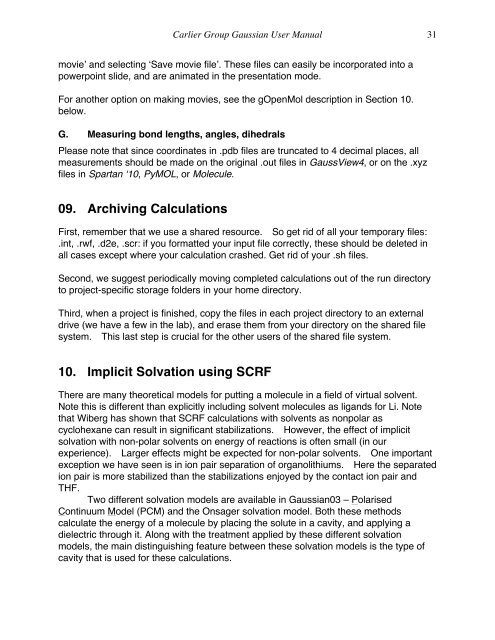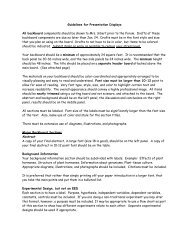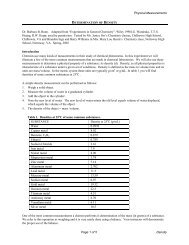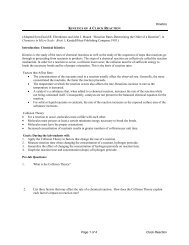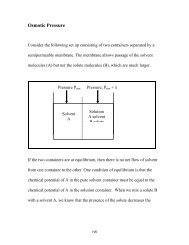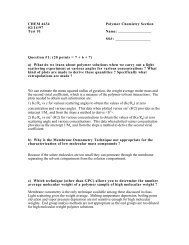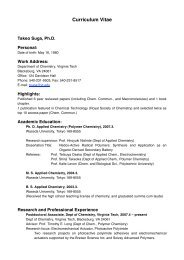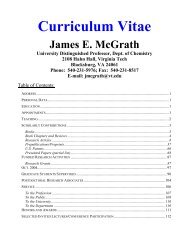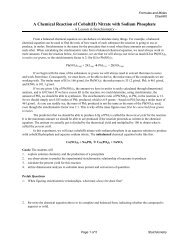Carlier Group Gaussian User Manual - Virginia Tech
Carlier Group Gaussian User Manual - Virginia Tech
Carlier Group Gaussian User Manual - Virginia Tech
You also want an ePaper? Increase the reach of your titles
YUMPU automatically turns print PDFs into web optimized ePapers that Google loves.
<strong>Carlier</strong> <strong>Group</strong> <strong>Gaussian</strong> <strong>User</strong> <strong>Manual</strong> 31<br />
movie’ and selecting ‘Save movie file’. These files can easily be incorporated into a<br />
powerpoint slide, and are animated in the presentation mode.<br />
For another option on making movies, see the gOpenMol description in Section 10.<br />
below.<br />
G. Measuring bond lengths, angles, dihedrals<br />
Please note that since coordinates in .pdb files are truncated to 4 decimal places, all<br />
measurements should be made on the original .out files in GaussView4, or on the .xyz<br />
files in Spartan ‘10, PyMOL, or Molecule.<br />
09. Archiving Calculations<br />
First, remember that we use a shared resource. So get rid of all your temporary files:<br />
.int, .rwf, .d2e, .scr: if you formatted your input file correctly, these should be deleted in<br />
all cases except where your calculation crashed. Get rid of your .sh files.<br />
Second, we suggest periodically moving completed calculations out of the run directory<br />
to project-specific storage folders in your home directory.<br />
Third, when a project is finished, copy the files in each project directory to an external<br />
drive (we have a few in the lab), and erase them from your directory on the shared file<br />
system. This last step is crucial for the other users of the shared file system.<br />
10. Implicit Solvation using SCRF<br />
There are many theoretical models for putting a molecule in a field of virtual solvent.<br />
Note this is different than explicitly including solvent molecules as ligands for Li. Note<br />
that Wiberg has shown that SCRF calculations with solvents as nonpolar as<br />
cyclohexane can result in significant stabilizations. However, the effect of implicit<br />
solvation with non-polar solvents on energy of reactions is often small (in our<br />
experience). Larger effects might be expected for non-polar solvents. One important<br />
exception we have seen is in ion pair separation of organolithiums. Here the separated<br />
ion pair is more stabilized than the stabilizations enjoyed by the contact ion pair and<br />
THF.<br />
Two different solvation models are available in <strong>Gaussian</strong>03 – Polarised<br />
Continuum Model (PCM) and the Onsager solvation model. Both these methods<br />
calculate the energy of a molecule by placing the solute in a cavity, and applying a<br />
dielectric through it. Along with the treatment applied by these different solvation<br />
models, the main distinguishing feature between these solvation models is the type of<br />
cavity that is used for these calculations.


